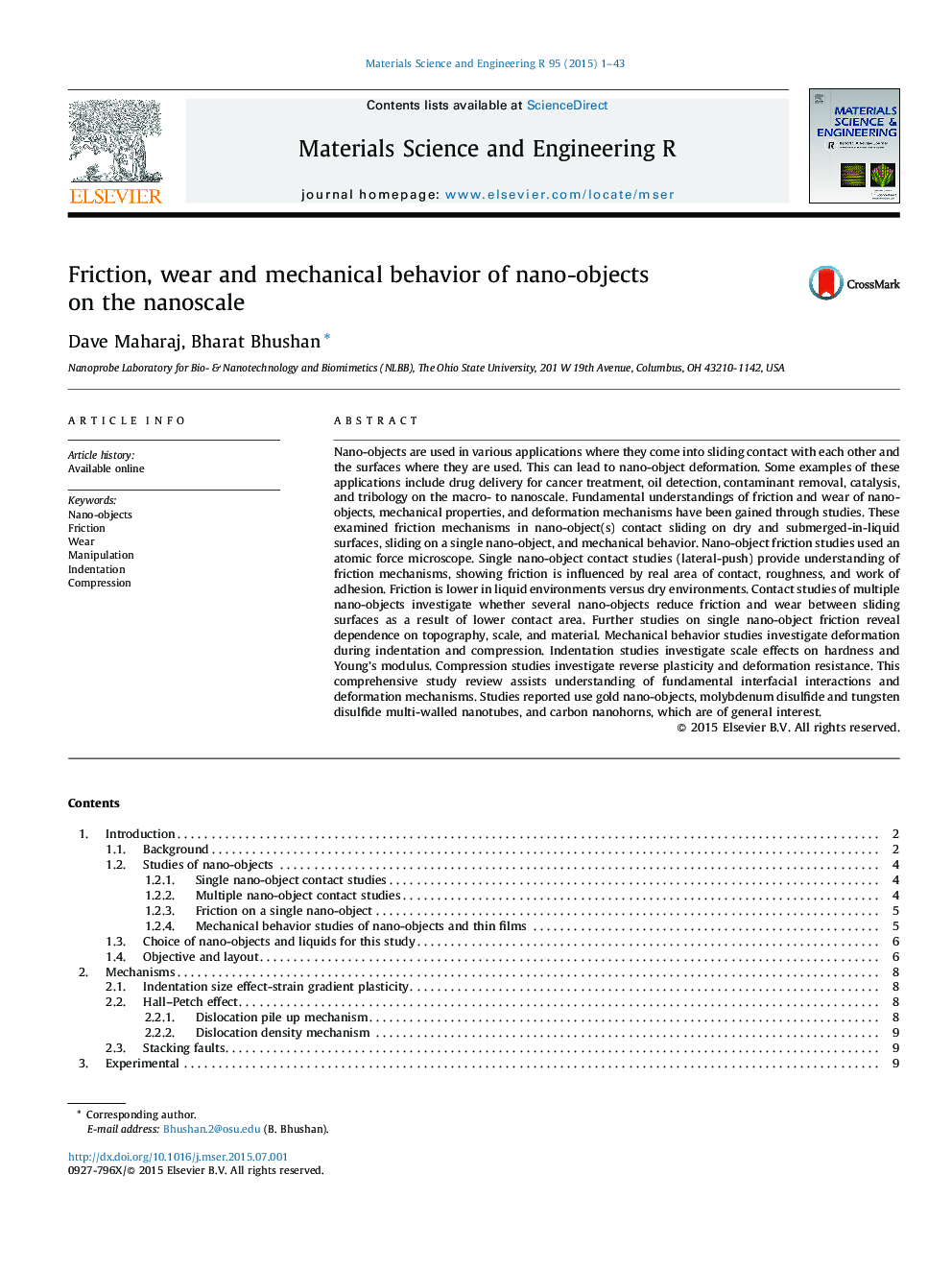| Article ID | Journal | Published Year | Pages | File Type |
|---|---|---|---|---|
| 1532314 | Materials Science and Engineering: R: Reports | 2015 | 43 Pages |
Abstract
Nano-objects are used in various applications where they come into sliding contact with each other and the surfaces where they are used. This can lead to nano-object deformation. Some examples of these applications include drug delivery for cancer treatment, oil detection, contaminant removal, catalysis, and tribology on the macro- to nanoscale. Fundamental understandings of friction and wear of nano-objects, mechanical properties, and deformation mechanisms have been gained through studies. These examined friction mechanisms in nano-object(s) contact sliding on dry and submerged-in-liquid surfaces, sliding on a single nano-object, and mechanical behavior. Nano-object friction studies used an atomic force microscope. Single nano-object contact studies (lateral-push) provide understanding of friction mechanisms, showing friction is influenced by real area of contact, roughness, and work of adhesion. Friction is lower in liquid environments versus dry environments. Contact studies of multiple nano-objects investigate whether several nano-objects reduce friction and wear between sliding surfaces as a result of lower contact area. Further studies on single nano-object friction reveal dependence on topography, scale, and material. Mechanical behavior studies investigate deformation during indentation and compression. Indentation studies investigate scale effects on hardness and Young's modulus. Compression studies investigate reverse plasticity and deformation resistance. This comprehensive study review assists understanding of fundamental interfacial interactions and deformation mechanisms. Studies reported use gold nano-objects, molybdenum disulfide and tungsten disulfide multi-walled nanotubes, and carbon nanohorns, which are of general interest.
Related Topics
Physical Sciences and Engineering
Materials Science
Electronic, Optical and Magnetic Materials
Authors
Dave Maharaj, Bharat Bhushan,
